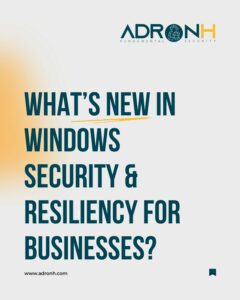Wisely enforced MFA
Multi-factor authentication (MFA) is essential for strengthening online account security. However, applying it everywhere, all the time, can have its drawbacks.
- Complexity for users: Activating MFA at every login can be tedious for users, especially if they access their accounts frequently. This can lead to resistance to using MFA.
- Dependency risks: If MFA is activated everywhere, users can become dependent on this security layer. If the MFA system fails, they may not be able to access their accounts.
- Increased monitoring: Applying MFA everywhere means administrators have to monitor alerts and authentication attempts more closely. This can lead to an additional workload.
It is therefore important to apply MFA judiciously, taking into account the level of risk associated with each account, and balancing security and user-friendliness. Sensitive or high-risk accounts should benefit from strict MFA, while other accounts can use less restrictive authentication methods.
manage your devices
Proper administration of IT equipment is essential to enhance security and protect against cyber attacks.
- Vulnerability management: By regularly administering systems, security updates and patches are applied. Unpatched vulnerabilities can be exploited by attackers.
- Access control: Proper administration ensures effective access control. By managing user accounts, permissions and privileges, organizations can limit unauthorized access and reduce the attack surface.
- Secure configuration: Administration of security parameters ensures that devices are configured securely. This includes enabling firewalls, disabling unnecessary services and setting up encryption.
- Monitoring and incident response: Managed systems enable better monitoring of network traffic, logs and security events. In the event of an incident, rapid response and mitigation are possible.
- User awareness: Equipment administration involves educating users on best security practices, such as avoiding suspicious links and using strong passwords.
Protect your data and emails
In today’s digital landscape, email and document management are essential to business operations. Protecting these assets within Microsoft Outlook and Sharepoint is of paramount importance for several reasons:
- Data breach prevention: Emails and documents often contain sensitive information such as financial data, intellectual property and personal details. Appropriate security measures prevent unauthorized access and reduce the risk of data breaches.
- Defense against phishing and malware: Cybercriminals frequently use email as an attack vector. By securing Outlook, organizations can block phishing emails, malicious attachments and links that could compromise user accounts or spread malware.
- Internal threat mitigation: Even unintentional actions by employees can lead to security incidents. Implementing access controls, encryption and monitoring helps prevent accidental data leakage or intentional misuse.
- Compliance and legal requirements: many sectors are subject to strict regulations (such as RGPD,CSSF). Protecting emails and documents ensures compliance with these rules, avoiding penalties and reputational damage.
- Collaboration security: Sharepoint facilitates collaboration, but also introduces risks. Appropriate access controls, version tracking and encryption protect shared documents from unauthorized modification or leakage.
